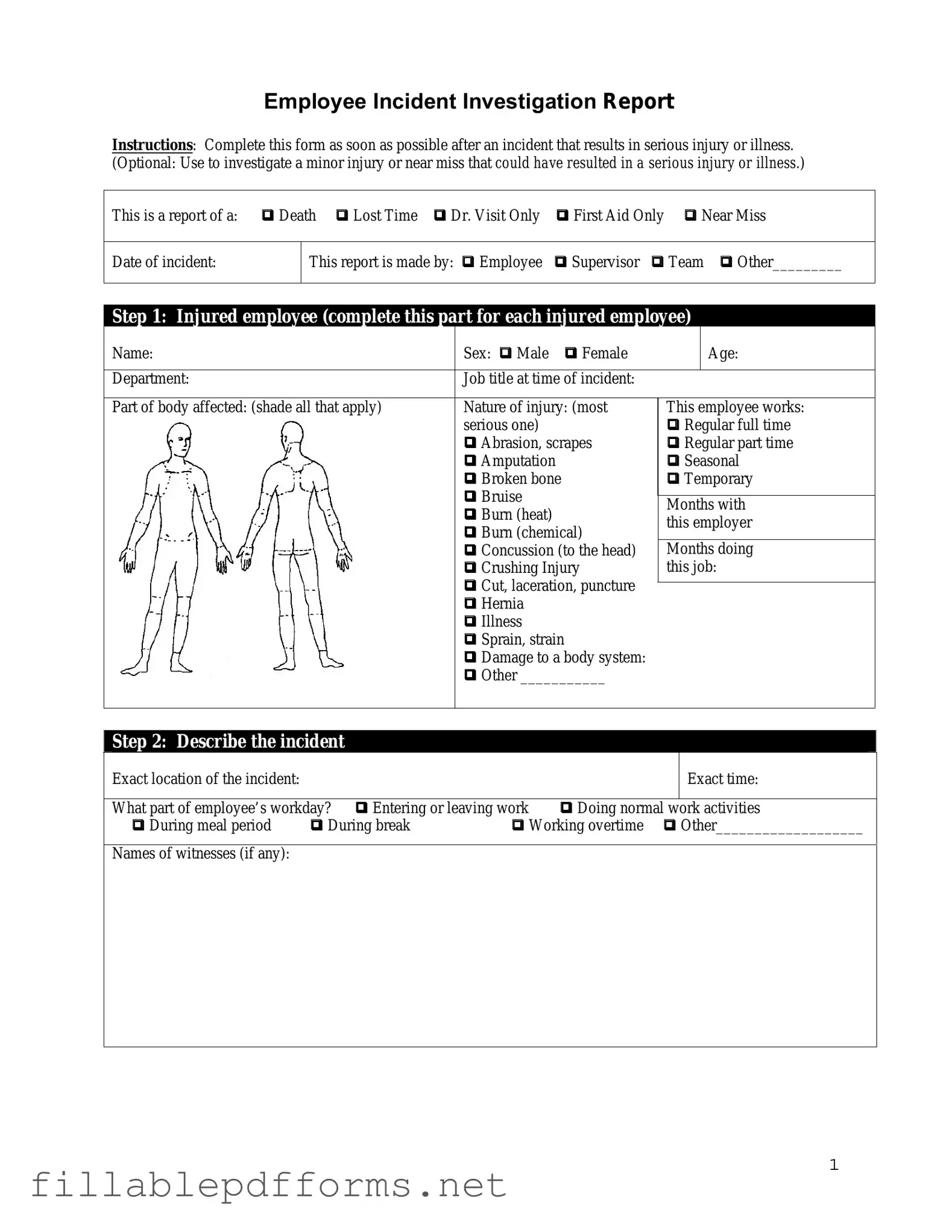The Employee Accident Report form serves as a crucial tool for documenting workplace incidents, ensuring that employers and employees can address safety concerns effectively. This form typically captures essential details about the accident, including the date, time, and location of the incident, as well as a description of what occurred. It also includes information about the individuals involved, such as the names of the injured employee and any witnesses. Additionally, the form often prompts for details on the nature of the injury, the circumstances leading to the accident, and any immediate actions taken in response. By providing a structured format for reporting accidents, this form not only aids in compliance with legal requirements but also helps organizations identify patterns and implement preventive measures to enhance workplace safety. Overall, the Employee Accident Report form is an integral component of an effective risk management strategy, fostering a culture of accountability and continuous improvement in occupational health and safety practices.
